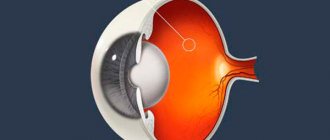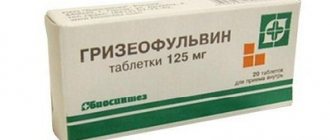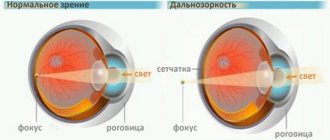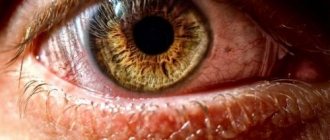Oligophrenia is a congenital or acquired dementia, which is expressed in underdevelopment of the intellect and psyche. The deviation most often occurs as a result of injuries or illnesses suffered during pregnancy, childbirth or the first years of a person’s life. The disease was studied, classified and described in detail in the last century, and previously all kinds of deviations at any age were classified as “dementia”. Today, medicine is able to determine the degree of mental retardation based on psychological tests that reveal a person’s intellectual quotient.
general description
Oligophrenia, when considered, requires its distinction from the acquired form of dementia, which is classified as such a pathology as dementia. This form of it means a decrease in intelligence due to certain reasons with concomitant brain damage, that is, intelligence decreases from normal levels corresponding to the patient’s age. As for the condition of oligophrenia that interests us, then with it the intelligence of a physically adult person is not subject to development, that is, there is no tendency to achieve normal indicators.
Oligophrenia was identified as a separate disease only in the last century, and before its isolation, the definition of “dementia” was used in practice for any group of patients, be it with a congenital form of the disease with mental underdevelopment, or with an acquired form (dementia).
There are some difficulties in trying to determine the prevalence of oligophrenia, which is explained, first of all, by the distinctive features of the diagnostic approaches used. In addition, the degree of tolerance on the part of society in relation to mental abnormalities, as well as the degree of accessibility to the use of specialized medical care, plays an important role in this issue. Predominantly in industrialized countries, mental retardation occurs in 1% of the population, and 85% of patients have a mild form of mental retardation. The share of moderate mental retardation, as well as severe retardation and profound retardation, accounts for 10%, 4% and 1% in a similar sequence. As for the ratio of the incidence of oligophrenia depending on gender, the indicator varies between men and women within the range of 1.5:1-2:1.
It should be noted that mental retardation (again, unlike dementia) is not a progressive process, but a process that determines the subsequent outcome of the disease.
Forms of oligophrenia
Depending on the causes of oligophrenia, four forms of the disease are distinguished:
- 1 form occurs due to the hereditary influence of the generative cells of the parents;
- Form 2 of oligophrenia in children is different types of embryo- and fetopathies. Mental abnormalities are rooted in disorders of intrauterine development of the fetus;
- Form 3 is a consequence of birth trauma and early diseases, injuries, as a result of which mental retardation develops in children;
- Form 4 oligophrenia is a type of mental retardation that is caused by the progression of an underlying congenital disease, for example, brain defects or endocrine pathologies.
Classification of oligophrenia
The classification of current forms of oligophrenia exists in several versions, each of which takes into account the severity of this disease and has its own characteristics of isolation. In the traditional version, the degrees of oligophrenia can manifest themselves in three variants:
- debility (a mild form of mental retardation);
- imbecility (moderate severity of mental retardation);
- idiocy (extreme severity of mental retardation).
Increasingly, today, the ICD-10 classification is used in accordance with IQ indicators (intelligence quotient indicators, the identification of which occurs through specialized tests), which determine the severity of oligophrenia, which is offered in the following versions:
- mild degree of oligophrenia - with IQ scores in the range of 50-70 points;
- moderate degree of mental retardation – with IQ scores in the range of 35-50 points;
- severe mental retardation – with IQ scores ranging from 20-35 points;
- deep degree of oligophrenia - with IQ scores not reaching 20 points.
In general, there is no uniform classification for this disease today. Based on the etiological factors that provoked the development of oligophrenia, undifferentiated oligophrenia and differentiated oligophrenia (undifferentiated mental retardation and differentiated mental retardation) are distinguished. The differentiated form refers to etiologically defined variants of the disease; the undifferentiated form, respectively, refers to diseases whose development was provoked by unknown causes.
What is oligophrenia
Scientists have been conducting research for a long time and trying to identify what mental retardation is. It is very important to distinguish it from acquired mental disorders. As the patient ages with dementia (one of the forms of dementia), as well as due to the action of certain negative factors, mental activity decreases. With oligophrenia, there is a clear underdevelopment of the intellect and psyche (that is, the patient does not develop according to his real age).
This term was discovered not so long ago. Previously, all patients with such deviations were given one general diagnosis - dementia. Oligophrenia is quite common and is diagnosed in children under 3 years of age. It is worth noting that boys are more susceptible to this disease. The insidiousness of the disease lies in the difficulty of diagnosis in the early stages. Very often, disorders are discovered in advanced stages, when it is already difficult to help the child with anything.
According to statistics, oligophrenia is more often diagnosed in schoolchildren and students. At a certain age, when entering school or university, you must pass tests. If a person cannot cope with them, doctors diagnose mental development disorders and send them for additional examination to specialists (speech therapist, neurologist, etc.).
Oligophrenia: symptoms
Undifferentiated oligophrenia either manifests itself as a result of damage to the rudiment of the brain, or as part of a later stage of its intrauterine damage. The degrees of oligophrenia noted above (debility, imbecility and idiocy) refer to varieties of undifferentiated forms of oligophrenia; the determination of compliance with a particular of the three forms is made on the basis of compliance of IQ indicators with certain boundaries, discussed above. Let us consider the indicated degrees of mental retardation separately in combination with the symptoms inherent in each of them.
- Mental retardation: debility
Moronism is the mildest degree of manifestation of the patient’s mental underdevelopment. It, in turn, manifests itself in several forms, the determination of which is made on the basis of compliance with IQ indicators. Thus, in a mild form, IQ corresponds to indicators in the range of 65-69 points, in a moderate form - in the range of 60-64 points, in a severe form - in the range of 50-59 points. Scores are determined during a comprehensive clinical examination.
Current impairments in the cognitive sphere in patients with oligophrenia to the considered degree manifest themselves in the form of an inability to develop concepts in a complex form, as a result of which attempts at complex generalization are impossible; limitations in abstract thinking (mild degree) or its impossibility are also relevant.
Patients are characterized by the predominance of a concrete-descriptive type of thinking; it is difficult for them to fully comprehend the situation - mainly only the external side of the events required for consideration can be covered. Based on the degree of severity of debility in patients, this inability manifests itself in each of them to varying degrees, while disturbances in abstract thinking are noted in them in any case. The possibility of studying at school in such patients is allowed, but the material must be mastered with great effort; mathematics is a particularly difficult subject for them.
Moronic patients lack their own judgment and inquisitive mind, they constantly adopt other people's point of view and views. When memorizing expressions, rules, etc., they are used in a template form; often they themselves begin to teach the information acquired in this way to those people who surround them. And although such patients are not characterized by subtle analysis in combination with the necessary generalization, this does not exclude, in case of debility (this is especially true with its mild degree), the dexterity of orientation within the conditions of ordinary situations.
A pronounced delay in mental development in debilitated patients in some cases determines the possibility of partial giftedness for them. It can manifest itself, for example, in excellent mechanical memory (but with the exception of their comprehension of the repeated information). Similar skills in hearing, drawing, dexterous handling of large numbers in performing certain mathematical operations (for example, multiplication), etc. are not excluded.
A characteristic feature of patients with debility is their easy susceptibility to being influenced, an increased form of suggestibility. This feature determines a significant danger both for them and for the environment, because in certain situations they can become a tool in various types of fraud and crimes due to the impossibility of comprehending the situation in the required way. Yielding to the instructions of someone else's will, moronic patients can break, kill, set fire, etc. - any action in this case is performed at the level of automatism, without taking into account the consequences.
Debilitated patients are often characterized by increased manifestation of primitive forms of drives. This can be vulgar and dissolute behavior; primitive instincts also include the sexual side of their behavior.
As for character traits, patients with debility have common traits with imbeciles (we will consider them below), in particular, they can be friendly, friendly and good-natured. The opposite option is also possible, in which they are characterized by vindictiveness, aggressiveness, malice and stubbornness. Behavioral characteristics are dominated by inactivity or motor excitability.
- Oligophrenia in the stage of imbecility
Imbecility determines the average degree of manifestation of oligophrenia with an IQ in the range of 35-39 points. A violation of cognitive activity determines the possibility of the formation of ideas, but the formation of concepts, as a slightly higher level of mental activity, becomes either a significantly difficult process or completely impossible.
Generalization and abstract thinking are excluded in this case. Imbeciles have the opportunity to acquire a standard type of skills related to self-service (independent food consumption, dressing, neatness); in addition, they can perform simple work activities, which is ensured through training in performing imitative actions. For example, they may be involved in cleaning the yard or premises, they may be engaged in rewinding threads or perform some other operations that involve performing the same action.
Patients with imbecility have an understanding of simple speech, and they themselves can learn a certain set of words. Similar to the previous form of mental underdevelopment, the severity of imbecility falls under three main options (mild, moderate and severe), each of which corresponds to certain levels of manifestation.
When considering the speech of imbeciles, it can be noted that it consists of standard and extremely short phrases (a noun with a verb or a simple adjective).
As for the possibility of learning something new, this is given to patients with enormous effort, often only within the framework of certain specific ideas that exclude any form of generalization. Imbeciles lack independent thinking, which is why they can only adapt to the conditions of an environment that is familiar and sufficiently familiar to them. Even with minimal deviations from plans, actions or situations, significant difficulties arise that require constant guidance.
In addition, imbeciles are also characterized by an increased degree of suggestibility. Their personal interests are mostly very primitive, boiling down mainly to satisfying ordinary physiological needs. Often they are characterized by particular gluttony and sloppiness in food consumption. As for the other side, related to satisfying the needs for sex, here only in some cases there is an increased degree of sexual desire, which in this case manifests itself in combination with promiscuity in behavior.
Depending on the behavior inherent in oligophrenics at this stage, they are divided into two main groups. Thus, the first group includes very mobile, energetic and active patients, the second group - on the contrary, apathetic and lethargic, indifferent patients, they do not react to anything and are only interested in satisfying those needs that are important to them.
Depending on their character, imbeciles are also divided into two groups, thereby dividing into friendly, good-natured, sociable and flexible, and into aggressive and evil ones.
Despite the fact that imbeciles have the ability to perform primitive actions, they are not able to live independently; they require constant supervision of qualified personnel.
- Oligophrenia: idiocy
Idiocy represents the most profound degree of mental retardation with an IQ score of less than 34 points. In this case, the patients are absolutely unteachable, their movements are characterized by clumsiness and lack of purposefulness, and speech is also practically absent (only slurred pronunciation of individual words becomes possible). The manifestation of emotions comes down to the reproduction of the simplest reactions (pleasure or, respectively, displeasure). The cause of idiocy lies in genetic pathology. In the vast majority of cases, patients are inactive, they are unable to control urination and defecation, this also applies to eating, and they are often unable to distinguish edible from inedible. Such patients can only master visual-spatial forms of coordination and basic skills.
Idiocy, as a rule, is accompanied by severe forms of structural damage to the brain, severe and varied neurological symptoms, defects associated with the sensory organs, epileptic seizures, structural defects of internal organs and the body as a whole. If adequate care is provided for such patients, some of them can live up to the age of 30-40 years, but mostly they die in childhood or adolescence due to the development of an intercurrent type of disease.
Considering that such patients cannot develop intellectually, as well as being unable to independently meet their own needs, they need constant help, care and supervision in specialized institutions.
Features of the treatment of oligophrenia in people
Unfortunately, oligophrenia cannot be treated, and it is impossible for people with this diagnosis to fully recover. They practice a variety of correction methods, they are trained in special institutions and are maximally adapted to independent life. True, in severe forms of oligophrenia, constant supervision and help from other people are necessary, even in self-care. That is why, at the moment, the range of means to combat this disease is quite narrow, and it is not known exactly how to treat oligophrenia effectively.
Symptomatic therapy
They mainly use those means that correct the general behavior and condition of a person. They belong to different groups depending on their symptoms:
- Anticonvulsants
. In the presence of structural changes in the cerebral cortex, which, in fact, caused mental retardation, convulsions are often observed. These are localized or generalized twitching of individual muscle groups, which are provoked by irritation of certain areas of the brain. In order to get rid of such symptoms, anticonvulsant medications are prescribed. - Corrective therapy
. Often, along with a delay in a person’s mental functions, various defects of the heart and other organs are observed. They can cause significant changes in health, so be sure to take these features into account. For example, defects of the heart septum or valves affect overall hemodynamics, so it would be advisable to prescribe appropriate treatment. - Psychostimulants
. It cannot be said that it is possible to achieve a significant effect when using drugs of this series, but improving cerebral blood flow and the condition of neurons is always useful. It is known that nootropics are drugs that affect human cognitive functions, improve memory and intelligence. That is why they are almost always prescribed for any symptoms of brain dysfunction. - Neuroleptics
. The use of drugs in this spectrum is due to the need to correct the behavior of some people with mental retardation. Due to the simplification of reactions and judgments, they can be aggressive and even cause harm to themselves and others. If these symptoms are present, it would be advisable to prescribe antipsychotics. Treatment of oligophrenia with potent psychotropic drugs should be carried out under the strict supervision of a psychiatrist.
Psychotherapeutic assistance
At the moment, a lot of different programs have been developed for the development of the cognitive spectrum of mental activity.
They are built on simple mechanisms of inheritance and imitation, which can be mastered by a person with a low IQ. These programs are successfully used in specialized institutions for helping people with mental retardation. In addition to the usual disciplines that are included in the school curriculum for compulsory study, children with mental retardation are taught lessons in verbal and nonverbal communication. They are taught to distinguish between people's emotional states and to respond correctly. They also explain practical models of behavior that are necessary in everyday communication with others.
The most important part of any psychotherapeutic program is socialization - adaptation to established norms of behavior and life in the outside world. A person is taught to interact correctly with other people so that in the future it will not be difficult.
In most specialized institutions that deal with such patients, special courses are held for people with mild or moderate mental retardation, teaching simple professions. With the help of compiled programs, detailed examples are used to explain a person’s task and reinforce skills in the subconscious. After this, he can independently find a job that matches his professional qualities.
Differentiated oligophrenia
In domestic medicine, a two-level classification is used, based primarily on the time within which the corresponding pathological effect was exerted, as well as on the quality of the damage by the harmful factor and its overall severity. Regarding the time of exposure (including the characteristic features and similarities of the onset of the disease and its development), this classification defines three main groups of oligophrenia, namely:
- familial and hereditary oligophrenia;
- embryonic or fetal damage;
- development of oligophrenia within the framework of certain harmful influences during labor and the first months/years of a child’s life.
Differentiated oligophrenia, that is, those oligophrenias whose etiology has already been studied, can thus be divided into the following groups:
- oligophrenia resulting from hereditary pathologies (chromosomal or genetic);
- oligophrenia resulting from exposure to a certain type of harmful substances and microorganisms (intoxication, infection, etc.) during the period of intrauterine development of the fetus;
- oligophrenia resulting from exposure to a certain type of harmful substances and microorganisms during the perinatal period, as well as the first months and years of the child’s life;
- oligophrenia resulting from exposure to a negative type of psychosocial phenomena.
Let us highlight some types of differentiated oligophrenia.
- Microcephaly
Microcephaly is characterized by a significant reduction in the size of the skull, which, accordingly, determines similar sizes for the brain (other parts of the body correspond to the norm). Thus, with a horizontal coverage of the skull, microcephaly determines a figure of less than 49 cm (the minimum indicators for the coverage of the skull are 22 cm). Brain mass indicators are also sharply reduced (ranging from 150 to 400 grams). The hemispheres are characterized by underdevelopment, underdevelopment is also noted in the gyri (this is especially true of the frontal gyri).
Microcephaly: comparison
Microcephaly in a newborn: photo
Simultaneously with these pathologies, it is often noted that the size of the cerebellum in combination with the subcortical nodes corresponds to the norm. As for the mental disorders that are relevant for microcephaly, they are very significant in manifestations, the degree of severity of the manifestations of oligophrenia is quite deep, due to which the patients’ condition is noted to be approaching the absolute form of idiocy (much less often the degree of idiocy manifests itself in this condition in a mild form). The causes of microcephaly are the effects of various types of harmful factors on the fetus during the initial stages of pregnancy (this includes diseases transmitted by the mother: Botkin’s disease, rubella, influenza, etc.; chronic intoxication (diabetes, tuberculosis, alcohol); the use of certain chemotherapy drugs ( such as sulfonamides, quinine, etc.); toxoplasmosis (see below).
- Toxoplasmosis
Toxoplasmosis is defined as a parasitic disease that develops as a result of exposure to toxoplasma; various types of domestic mammals, as well as wild mammals (dogs, cats, rabbits, various predators, rodents, herbivores, etc.) are considered as a source of infection. Toxoplasma penetrates the fetus through the placenta through an infected mother; infection of the child is also possible during the first years of his life.
With toxoplasmosis, the actual degree of oligophrenia for the patient can manifest itself in different ways. In addition, the possibility of manifestation of catatonic disorders and epileptiform seizures is also allowed. The development of oligophrenia against this background may also be accompanied by encephalitis/meningoencephalitis of toxoplasmosis nature. Toxoplasmosis can also occur in combination with pathologies such as hydrocephalus or microcephaly. The course of toxoplasmosis, in addition to the listed features, is accompanied by eye damage (retinal detachment, iridocyclitis, pigmentary choreoretinitis). In the bones of the skull and in the brain, areas of calcification form (calcification - that is, the deposition of calcium salts in these areas in the absence of them here normally).
- Phenylpyruvic oligophrenia
This form of pathology is associated with the fact that there is a disturbance in the body’s metabolism of phenylanine with the simultaneous formation of phenylpyruvic acid in significant quantities; its content can be determined in urine, blood, and sweat. The condition is accompanied by manifestations of deep degrees of oligophrenia (idiocy or imbecility), as well as hypopigmentation of the iris and skin. Phenylpyruvic oligophrenia is also accompanied by a pathological condition with impaired metabolism of B vitamins.
- Langdon Down disease
It is also known as trisomy 21, Down syndrome. This pathology is characterized by the presence of not 46, but 47 chromosomes in a sick person, which occurs for as yet unknown reasons (it is assumed that the development of the syndrome is caused by a pathological form of heredity or a chromosomal abnormality). The number of chromosomes is determined by the fact that the chromosomes represented by the 21st pair do not have a standard pair, but three copies (other variants of chromosome pathology are less often considered).
Down syndrome: photo
Here, as in other cases considered, there is a manifestation of mental disorders and oligophrenia in particular; moreover, there are characteristic features that accompany this disease in combination with Down syndrome. Thus, mental retardation in Down syndrome determines the significant mobility of patients, their good nature and affection, they have expressive movements and facial expressions, and have a tendency to imitate.
Down syndrome: signs
The appearance of the patients is also very characteristic, it consists in a spherical shape of the head with widely spaced eyes, a characteristic fold (epicanthus) appears on the upper eyelid, the nose is somewhat flattened, upturned, short, the tongue is streaked. Patients also have decreased muscle tone, loose joints, and short stature.
- Pilvia mental retardation in combination with dyskeratosis
This form of the disease is caused by an insufficient amount of vitamin A in the expectant mother’s body during pregnancy, which is especially important during the first trimester. In addition to oligophrenia, ichthyosis subsequently develops against this background, and epileptiform seizures appear.
- Rubeolar embryopathy
This pathology is relevant if the expectant mother suffers a viral disease such as rubella during the first trimester. In this case, mental retardation manifests itself to a profound extent, accompanied by pathologies in the form of cataracts, congenital heart defects, and deaf-muteness.
- Oligophrenia developing against the background of a positive Rh factor
This pathology is relevant in case of a negative fetal factor. In this case, the causes of oligophrenia are associated with the fact that Rh antibodies reach the fetus through the placenta, resulting in subsequent damage to its brain. Oligophrenia, the symptoms of which develop in children against the background of exposure to this factor, is also accompanied by paralysis, paresis, and hyperkinesis.
- Residual oligophrenia
This form of the disease is observed in practice most often. In this case, the arrest of mental development is preceded by the patient suffering from infectious diseases (meningitis, meningoencephalitis) and injuries in early childhood. As for the degree of manifestation of oligophrenia here, it can be in any variant. The most common form of pathology that develops against the background of infections and injuries is hydrocephalus (the disease is accompanied by an increase in the volume of cerebrospinal fluid within the subarachnoid spaces (this is an external form of hydrocephalus) or an increase in its volume in the ventricles of the brain (internal hydrocephalus)).
In a circular coverage, the skull with hydrocephalus in size reaches about 70 cm or more, this is accompanied by weakening of vision, and often its complete loss, which is explained by the pressure exerted by the cerebrospinal fluid on the area of the intersection of the visual tuberosities with a plastic form of their atrophy. As for the mental degree of underdevelopment, relevant for hydrocephalus, it can be different, manifesting itself both in the form of mild debility and in the form of achieving an absolute state of idiocy. In addition to the development of hydrocephalus against the background of infections and injuries, there is a possibility of its development as a manifestation of an actual progression process, which may imply pathologies in the form of congenital syphilis, tumor formation in the brain, etc.
Hydrocephalus
Hydrocephalus in a child: photo
Causes of mental retardation
The causes of oligophrenia are the following factors:
- Heredity, including pathology of the generative cells of the mother and father (Down's disease, enzymopathic forms, true microcephaly);
- Damage to the embryo or fetus in utero (rubella, viral infections, toxoplasmosis, hormonal disorders, congenital syphilis);
- Harmful influences of the perinatal period and the first three years of a child’s life (birth trauma, conflict of Rh factors, asphyxia of the fetus and newborn, childhood infections, head injuries in early childhood, hydrocephalus).
Diagnostics
It should be immediately noted that IQ indicators alone cannot be used as the main and only criterion in the diagnosis of oligophrenia. The fact is that there are often cases in which people with low IQ scores and other signs of mental retardation in their own condition did not determine the basis for establishing such a diagnosis. Accordingly, the diagnosis of “oligophrenia” is established on the basis of a general assessment of the patient’s everyday skills and mental state, an assessment of the level of his social adaptation and a study of the anamnesis for previous diseases. Only an integrated approach determines the possibility of diagnosing a patient with mental retardation.
Oligophrenia in infancy, as well as in childhood, can manifest itself in a form of developmental delay that can be determined by a timely visit to the doctor. Within the context of preschool institutions, mental retardation in children is accompanied by problems with adaptation; it is difficult for children to maintain a daily routine, just as it is difficult for them to master classes with teachers - in this condition they become too complex.
Oligophrenia in school-age children can be detected through appropriate attention to the child and, in particular, alertness to his increased inattention, poor performance, and behavioral characteristics. Mental retardation is also often accompanied by symptoms in the form of frequent headaches, seizures, tics, and partial paralysis when limbs are affected.
Basically, mental retardation can be recognized at an early age. Mental retardation, which develops at the genetic level, is determined in the fetus during pregnancy (screening examination in a antenatal clinic and maternity hospital). If the symptoms characteristic of phenylketonuria (as a form of mental retardation) are identified and treatment started before the child reaches the age of two to three months, there is a chance of preserving intelligence. Taking this into account, pediatrician supervision is extremely necessary both during the neonatal period and during early childhood. In general, timely treatment, within the framework of possible measures, allows the child to achieve normal adaptation to the conditions that independent life implies.
Features of education
The behavior and attitude of parents towards a child diagnosed with oligophrenia are of particular importance for the therapy.
If the baby is raised in unfavorable conditions, the disease will develop at an accelerated pace.
The child will show signs of aggression towards the outside world, and the effectiveness of the rehabilitation course will be significantly reduced .
When raising a child with mental retardation, it is important for parents to remember several rules that must not be violated under any circumstances.
Parents are obliged:
- provide constant supervision of the child;
- provide the child with psychological assistance;
- treat the child kindly;
- positively motivate the child;
- teach the child basic skills;
- follow all recommendations prescribed by doctors;
- attend special classes with specialized specialists.
Treatment
Today, there are many different drugs aimed at using in the treatment of mental retardation in one form or another. However, any of these drugs should be prescribed by a doctor based on the general picture of the course of the disease. So, these can be hormonal drugs and iodine-containing drugs (if oligophrenia occurs against the background of thyroid pathologies). If we are talking about phenylketonuria, then in some cases you can only get by with a certain diet.
Correction of mental retardation is provided by nootropics (piracetam, pantogam, aminalon). Nootropics are designed to improve the processes occurring in brain tissue. This effect is achieved through the use of amino acids and vitamins from group B (cerebrolysin; succinic, glutamic acid). To correct behavioral disorders, tranquilizers or antipsychotics are prescribed. In general, treatment should be comprehensive, including not only drug therapy, but also providing the patient with an individual approach to training, conducting classes with a speech therapist, psychologist, due to which it will be possible to consider the success of subsequent adaptation in society.
If symptoms appear that correspond to one or another degree of oligophrenia (mental retardation), it is necessary to visit a pediatrician and neurologist.
Forecast
It all depends on the severity of oligophrenia. Doctors can give a favorable prognosis if a mild form of mental retardation is detected in a timely manner. With proper treatment, a child can learn to cope with basic everyday tasks, this increases the level of proper social adaptation. As adults, they can even master certain professions.
If the disease is not treated correctly, the disorders begin to progress rapidly, the consequences of mental retardation are severe:
- lifelong mental retardation;
- disability;
- manifestation of severe mental disorders.
Such patients require professional medical supervision and are placed in specialized centers.
Forecast and lifestyle
It is impossible to completely cure even mild stages of mental retardation. In case of debility, timely treatment will help the child adapt to society; in the future he will be able to get a simple job and live independently. Imbecility will require constant supervision, although the child will be able to work at simple, monotonous work (cleaning the yard, washing dishes). Parents of children with idiocy will have to look after the child for the rest of his life: such people will never be able to live even relatively independently.
It is important to start treatment on time. In addition, there is a higher likelihood of improvement if there is emotional contact with parents.
The severity of oligophrenia depending on age
Many people are interested in the question, how long do oligophrenics live? In order to answer this question, it should be said that life expectancy does not depend on the level of intellectual abilities. Most often, the life expectancy of patients with mental retardation is influenced by the environment and the level of care of loved ones.
It should also be mentioned that the brightness of the clinical picture of mental underdevelopment has a close relationship with the age of the patient. Clear signs of the presence of pathology appear between the ages of six and seven years. Less obvious symptoms associated with mental disorders appear at an earlier age, but it is very difficult to make a correct diagnosis. In infancy, mental retardation manifests itself in the form of increased irritability, emotional problems and lack of interest in the world around them. Many children with this diagnosis have difficulty mastering basic skills, such as putting on their own shoes and using cutlery.
At the age when healthy children learn about the world through games, mental retardation does not show much interest in games. At a later age, patients begin to use simple toys. At the age when most children begin to adopt adult behavior, children with an underdeveloped psyche are just beginning to explore the world through various interactions with the objects around them. Various activities that allow one to learn simple skills (modeling, playing with construction sets, and drawing) are either mastered at a primitive level or simply do not arouse sufficient interest.
It should also be mentioned that children with this diagnosis find it difficult to remember the purpose of surrounding objects, which significantly complicates interaction with the world. Chaotic activity and the implementation of stereotyped actions are clear signs of the presence of mental disorders. Many doctors say that this disease is characterized by delayed development of the speech apparatus . Young patients speak their first words at the age when most children learn to say their first phrases. In the future, such problems lead to poor perception of verbal instructions.
Mental retardation often requires the guardianship and guardianship of parents or the state
Diagnostic criteria according to ICD-10 and E.I. Bogdanova
To recognize oligophrenia, 2 diagnostic systems have been proposed.
According to ICD-10, these are gradations of mental retardation in the form of:
- delayed, incomplete development of the psyche with impaired speech, motor, cognitive and special abilities - their non-development in the period of maturation, which does not allow reaching a general intellectual level;
- dementia developing in combination with other mental (somatic) disorders or spontaneously;
- behavior adaptation disorders under unfavorable social conditions:
- low IQ numbers (taking into account direct cross-cultural characteristics):
- severity of behavioral deviations in the absence of concomitant mental disorders.
According to E.I. Bogdanova, the concept of oligophrenia is characterized by:
- reduced intelligence;
- system-wide underdevelopment of speech;
- attention disorders (including difficulties in concentration and switching);
- disturbances of perception (in the form of slowness, a decrease in its volume or its fragmentation);
- straightforwardness (specificity) of thinking with the inability to critically evaluate what was said or heard;
- small amount of memory;
- underdevelopment of cognitive activity;
- disorders of the emotional-volitional sphere (with instability, inadequacy of emotions or their low differentiation).
Take the test for mental retardation right now!
Treatment and rehabilitation for oligophrenia
Correction is possible only with early detection of violations. In other cases, only symptomatic therapy is used.
Drug treatment
Doctors select nootropic drugs, antihypoxants, antioxidants, drugs that stimulate metabolism in the brain, and vitamin complexes. If the child is very inhibited, mild stimulant medications are used. For hyperactive oligophrenics, sedatives are used. The doctor must select all medications and dosages individually.
Treatment with folk remedies
An infusion of lingonberry fruits is used. To prepare it, pour 1 tbsp into a glass of boiling water. dried berries. They insist for an hour. Give the patient 0.25-0.5 glasses three times a day.
Rose hips and raspberries taken in equal quantities are used. Grind the ingredients, mix, take 1 tbsp. collection, pour a glass of boiling water, take 50 g three times a day.
Diagnosis of the disorder
Diagnostics is carried out in several stages:
- Collection and analysis of patient complaints and medical history. The following factors are taken into account: age when the first signs of debility began to appear;
- the course of the mother's pregnancy;
- facts of colds and infections in childhood;
- malnutrition in childhood.
Treatment methods
Treatment of mental underdevelopment is carried out only when the disease is detected in the early stages of development. In other situations, people with this diagnosis are prescribed only symptomatic treatment. If there is an intrauterine infection, the disease is treated using the appropriate method. To treat oligophrenia, drugs belonging to the group of antioxidants, antihypoxands and nootropics are used. In addition, medications are used that improve metabolic processes in the brain area. Psychomotor agitation is eliminated by sedatives.
Oligophrenia (or mental retardation) is a pathology that cannot be cured
One of the important tasks of doctors is to adapt the patient to further implementation in society. It is very important to teach the patient to independently satisfy his own needs. Most people with this problem, due to difficulties in understanding others, plunge into voluntary isolation. Most often, patients are pushed to such a decision by a lack of emotional connection with their immediate environment.
In conclusion, it should be noted that the diagnosis in question changes the attitude of parents towards their child. The change in attitude leads to the fact that the child, who does not feel adequate emotional support, withdraws into himself. This factor significantly complicates a person’s further education. One of the important components of psychotherapy is to teach parents how to treat their special child correctly. A speech therapist is often involved in the treatment of oligophrenia in order to correct the development of the speech apparatus.
Treatment of mental retardation
The causes of debility include: heredity, unfavorable intrauterine development, infectious diseases of the mother during pregnancy, Rh conflict, fetal hypoxia, fetoplacental insufficiency, toxic effects on the fetus, drug use during pregnancy, alcoholic beverages, tobacco and certain medications.
There is a possibility of bringing a person to criminal liability if an SMS is saved on the phone. When receiving account details, you will only receive the time and date of SMS messages; the content of the SMS itself is not provided.
Imaginative thinking, the ability to generalize and abstract, suffer. The thinking of patients with severe mental retardation resembles the thinking of young children.
moronism - idiocy, degeneratism, cretinism, dementia Dictionary of Russian synonyms. moronity noun, number of synonyms: 7 • moronity (10) • ... Dictionary of synonyms
Characteristics of patients in the stage of debility
There are three groups of causes of oligophrenia - complexes of internal (endogenous), external (exogenous) and mixed factors.
General characteristics of oligophreniaStages of oligophreniaOligophrenia in the stage of debilityOligophrenia in the stage of imbecilityOligophrenia in the stage of idiocyCauses of the diseaseDiagnosis of oligophreniaIs oligophrenia inheritedTreatment of oligophreniaPrognosis of the disease
When he is moronic, he is unable to comprehend the educational process. However, in some cases, such children complete elementary school successfully, but in middle school they fail to cope with the program. As a result, there may be conflicts with teachers and behavior problems.
Patients suffering from idiocy are not able to act meaningfully; they communicate with others only by displaying emotions expressing pleasure or displeasure.
Symptoms
The clinical picture of oligophrenia in a child is closely related to his mental disorders. It includes disorders of speech, conscious functioning, emotions, cognition and generalization. Characteristic symptoms manifest themselves at different periods of life.
In newborns:
- abnormal structure of the head, face, body;
- pathologies of internal organs;
- signs of phenylketonuria: sour odor from urine and the newborn itself, pale skin, unnaturally light blue eyes, lethargy, convulsions, lack of basic reactions, muscle weakness;
Up to a year:
- head incontinence;
- absence of pre-speech babble;
- inability to sit, crawl, stand up.
For preschoolers:
- retardation in physical development;
- motor disorders;
- late and incoherent speech;
- instability of attention;
- emotional instability;
- behavioral disorders;
- low ability to master simple self-care activities (tying shoelaces, brushing teeth, getting dressed, etc.).
At school age:
- inability to master the normal course of the school curriculum;
- low intellectual level IQ;
- impairment or complete absence of abstract thinking;
- comprehensive delay in mental development: intelligence, memory, speech, emotional and motor spheres, volitional aspects, abilities of perception, concentration, thinking;
- poor, illiterate speech;
- absent-minded attention;
- lack of initiative;
- poor memory;
- inability to navigate the simplest situations: buy something in a store, dress for the weather, etc.;
- easy suggestibility;
- inability to make adequate decisions;
- delayed physical development.
Signs of oligophrenia detected at an early age (up to one year) indicate a severe form of the disease. Milder degrees manifest themselves much later and are almost invisible in infants. So the clinical picture will largely be determined by the type of disease.
Statistics data. According to doctors, oligophrenics today make up no more than 3% of the world's population.
Kinds
There is more than one classification of oligophrenia, each of which has its own advantages and disadvantages.
Traditional (according to severity)
Until recently, doctors distinguished the following forms of the disease:
- oligophrenia in the stage of debility, characterized by a mild clinical picture;
- oligophrenia in the degree of imbecility, characterized by more pronounced and noticeable symptoms of the disease;
- idiocy is an extremely pronounced degree.
However, recently in child psychiatry they are increasingly using a different classification, in which mental retardation is distributed according to severity based on IQ level.
According to ICD-10
The International Classification of Diseases, tenth revision, was carried out in 1989. According to it, the stages of oligophrenia are determined as follows.
- I degree
This is a mild degree, corresponding to debility according to the previous classification. IQ = 50-69. Children have physical underdevelopment, poor memory, problems with logical and abstract thinking, instability of attention, difficulties in carrying out certain purposeful actions, behavioral disorders, emotional instability, and greater suggestibility. It is diagnosed mainly at school age.
- II degree
This is an average degree, moderate, slightly expressed imbecility. IQ = 35-50. There is minimal independent thinking, sleep and appetite disorders, rapid fatigue, irritability, and developmental delays become noticeable at an early age. Such children have a limited vocabulary. There are disturbances in fine motor skills and low ability to master simple actions.
- III degree
This is a severe degree, significantly pronounced imbecility. IQ = 20-35. The clinical picture is almost the same as that of the previous form of the disease, but all disorders are more pronounced.
- IV degree
This is a deep degree, corresponding to idiocy. IQ = less than 20. Accompanied by a lack of thinking and speech abilities. Diagnosed at birth or immediately after it. Since there is significant damage to the central nervous system, such children do not respond to external stimuli, do not perceive speech, do not recognize their parents, do not experience or express emotions (no facial expressions), do not coordinate movements, do not touch objects, do not feel taste, smell, and even pain. A characteristic symptom is repeated mechanical repetition of one movement or a state of complete immobility for a long period of time.
Now in most medical institutions the diagnosis of oligophrenia is made to children precisely in accordance with this classification.
Pevzner classification
M. S. Pevzner, based on clinical and psychological-pedagogical research, was able to determine the structure of defects in mental retardation and develop a detailed classification. This is a qualitative typology of conditions that extends to the system of correctional, educational and medical measures. In the 70s of the 20th century, the scientist identified the following types of oligophrenia:
- uncomplicated;
- accompanied by neurodynamic disorders;
- with analyzer disorders;
- complicated oligophrenia with psychopathic forms of behavior;
- with pronounced frontal (mental) insufficiency.
The last 4, complicated forms of oligophrenia require the greatest attention from doctors and parents, since their symptoms are most pronounced and prevent the child from further social adaptation. To help him, you need to diagnose the disease in time and undergo the appropriate course of treatment.
A fact from the past. In 1967, WHO was very concerned about the increasing number of children suffering from mental retardation in many countries and created a special Expert Committee on mental retardation.
General characteristics of oligophrenia
In different countries, the prevalence of the disease ranges from 0.7 to 3%. Oligophrenia - dementia, congenital or acquired (up to 3 years). It is characterized by underdevelopment of the brain (often intrauterine), expressed in disorders of mental functions and intelligence.
The pathology manifests itself in problems with the functioning of the musculoskeletal system, speech, and decreased intellectual and emotional development.
The disease is more common in boys and is diagnosed before the age of 18 (a severe form is diagnosed in the first years of life). With a mild form of pathology, it is more difficult to assess intellectual abilities and mental underdevelopment, since the child’s psyche is still developing.
Oligophrenics may react incorrectly to a situation or environment.
Prevention
During pregnancy, a woman should refrain from consuming substances toxic to the fetus and be attentive to her health. It is important to follow all doctor's recommendations. During childbirth, listen to doctors and midwives; if there is no need, refuse to use stimulation or anesthesia. Closely monitor the baby's health; if he gets sick, begin treatment immediately (do not self-medicate; medications should be selected by a doctor). Avoid situations where the newborn may suffer mechanical damage.











